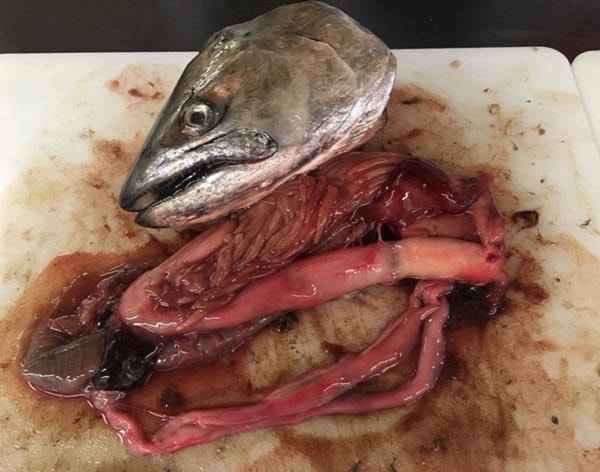Researchers at the University of Victoria are pairing up with recreational anglers to study what adult chinook and coho salmon eat to better understand eco-systems and fish survival rates.
Salmon are a species that many recreational anglers and commercial fisheries focusing on, and are extremely valuable to communities like Sooke, said Will Duguid, a University of Victoria doctoral student and researcher with UVic’s Fisheries Ecology and Marine Conservation Group.
Anglers and guides are asked to save the stomachs of fish. The UVic laboratory will then record the contents for further study.
No adult chinook and coho salmon diet studies have occurred in southern B.C. since the late 1980s, and there’s no published studies on diets during the less productive winter months.
“We get enthusiasm from anglers, and I think it’s important to involve the recreational fishing community in science as it relates to the ecosystems that support the fish they catch,” Duguid said.
Sooke fishing guide Ron Neitsch said that recreational fisheries are working with researchers and the Department of Fisheries and Oceans more than ever.
“Fishermen always feel like they are picked on with regulations, so it’s important because we want DFO’s decisions based on good, accurate, scientific information – not guesswork or what a special interest group is saying,” Neitsch said.
The project began last winter and created in hopes of becoming a long term study to gain a better understanding of how ecosystems change over time.
“We’re hoping that rather than this just be a project for a couple of years and then we write a paper and move on, that this will develop into what you could call a long term place based ecosystem monitoring program,” Duguid said.
The goal is for scientists and fisheries ecologists to understand how systems are changing to human activities and climate change.
“If we can do this for 30 or 40 years, people looking at this data set down the road will be able to use it as a way of seeing what changes have happened from year to year, and that information can put together a more comprehensive picture of the ecosystem,” Duguid said.
Improving the knowledge of how chinook and coho salmon diets vary by region, season and year can help scientists understand the factors limiting the growth and survival of the salmon population.
